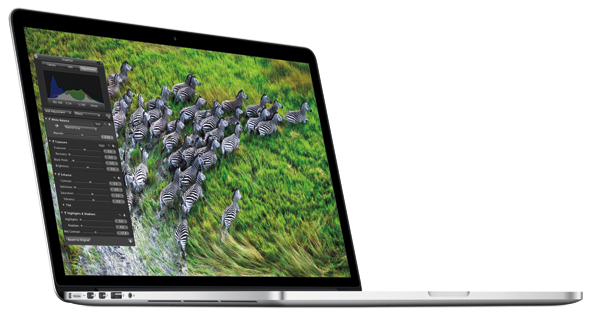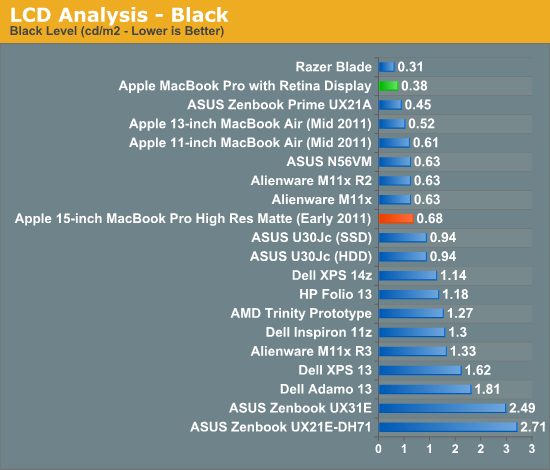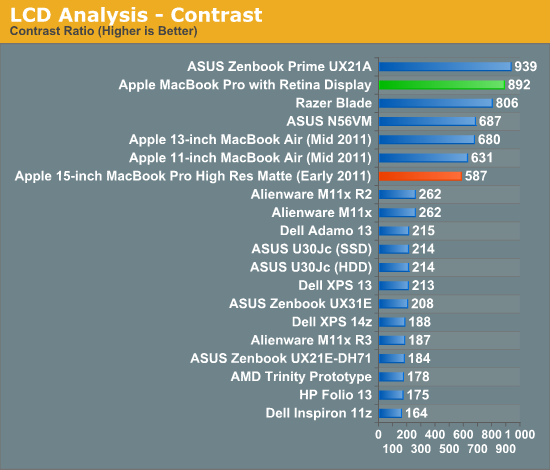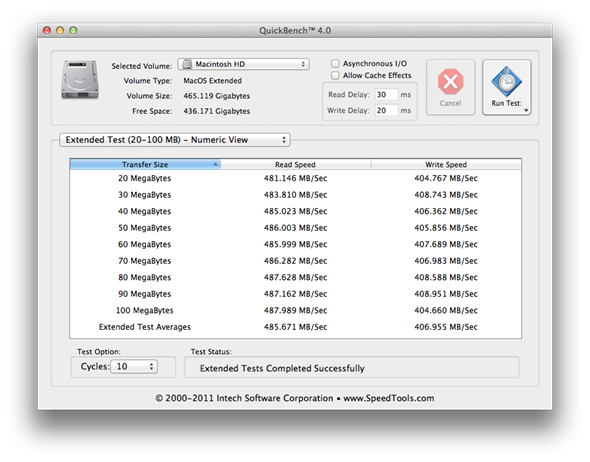Apple certainly delivered the goods at WWDC, and although most were pleased with iOS 6, Mountain Lion, and the hardware upgrades across the board, the introduction of the new "next-gen" MacBook Pro with Retina display was certainly a sight for sore eyes.
Unfortunately, like most techies, none of us have managed to get our hands on one just yet, although the guys over at Anandtech have, apart from breaking to eat, been scrutinizing the 2880 x 1800 screen of the thing for the past day or two.
You only have to look at the display of the new Retina-toting iPad to gather some idea of what’s going on, and far from just improving the pixel density and general clarity of the MacBook experience, The MacBook Pro with Retina Display does not include a cover glass, thus making for a less glossy, hence less reflective viewing perspective.

Viewing angles and black levels are significantly improved in general, so while pixel count does speak volumes for the potential quality, all of the extra attention to detail the Cupertino company has put in will round off the viewing experience perfectly.
Given Apple provides the hardware and stock software for its Mac computers, there won’t be that agonizing wait for third parties to update the staple diet of apps. The Retina display MacBook Pro will ship with beautifully-crisp visuals from the ground up, and although there will likely be a period of stagnation as some developers bring their popular applications up to scratch, the release of the third iPad in March, followed by a wave of Retina-enabled apps, demonstrated just how efficient they are at doing so.


The in-depth report, compiled by Anand Lal Shimpi, demonstrated that games will need to be adjusted before they can be enjoyed in 2880 x 1800, although this is most certainly to be expected.
As well as scrutinizing the display in grave detail, Anandtech has also had a good look at the performance of the new SSD, as well as USB 3.0.
As Phil Schiller exclaimed at the keynote, unlike other notebooks implementing USB 3.0 which use color coding to distinguish between the older and newer USB ports, the MacBook range has been fitted with hybrid connections which automatically detect whether a device is USB 2.0 or USB 3.0 compliant.
In transferring a file on the new MacBook Pro with USB 3.0 and comparing with the speeds of an early 2011 MacBook Pro, the difference in speeds found were astonishing. The file, 8.3GB in size, took less than a minute to transfer on the newer notebook, averaging out at 255.6 MB/s compared with just 28.3 MB/s on the older model.

As for the SSD, Schiller claimed it’s capable of up to 500MB/s read speed, although Anandtech’s QuickBench tests pitched it closer to 400MB/s. Then again, the tests were carried out rather hurriedly, and as Shimpi states in the report, it’s a little too early to draw definitive conclusions.

On the whole, the display is a massive improvement on any other from the MacBook range, and the unit in general sits in a league of its own. Considering the struggle the ultrabook market has had thus far in competing with the MacBook Air, this almost equally-thin – albeit very expensive – unit has the upper hand, and if the ultrabook looked an unsavory prospect to you before WWDC, it must look even worse right now.
You can follow us on Twitter, add us to your circle on Google+ or like our Facebook page to keep yourself updated on all the latest from Microsoft, Google, Apple and the Web.

